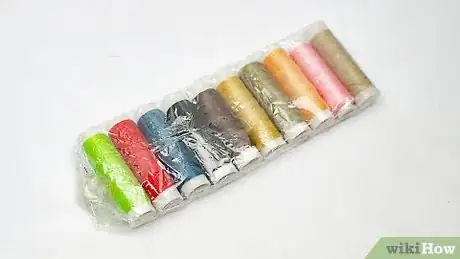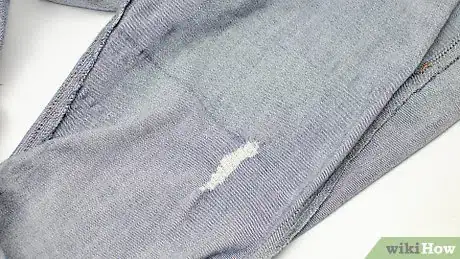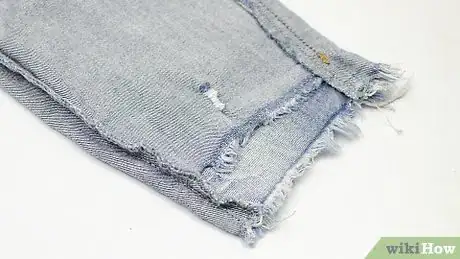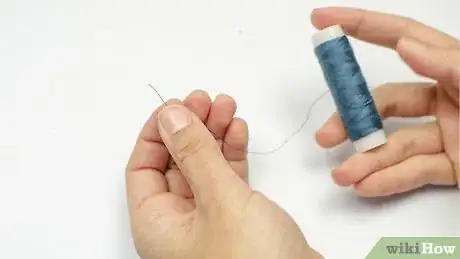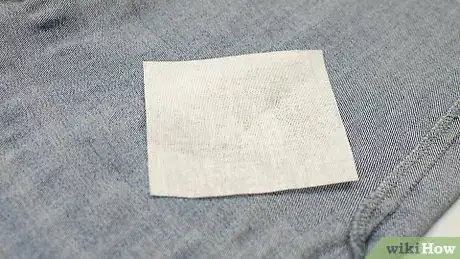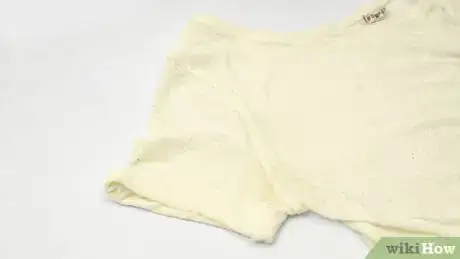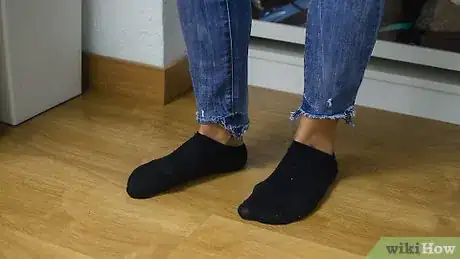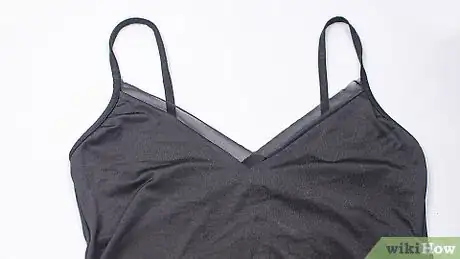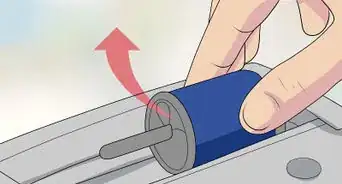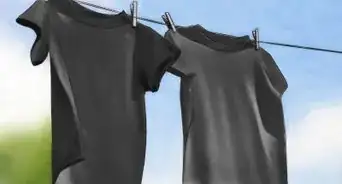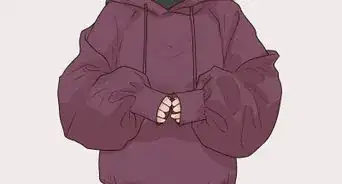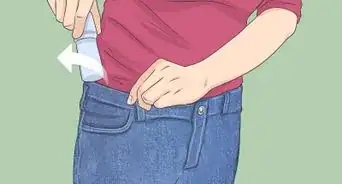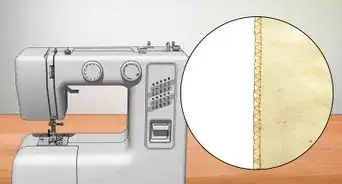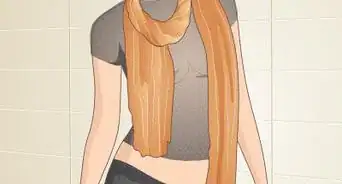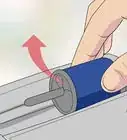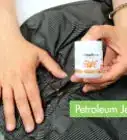This article was co-authored by Alterations Express. Alterations Express is a salon-style alteration and tailoring house with walk-in service, spacious dressing rooms, fitting specialists, and an extraordinary team of tailors and seamstresses at 13 storefront locations. With over 70 years of experience, they specialize in guiding individuals through a professional fitting, evaluating an alteration project on the spot, express alterations, and immediately providing pricing for any alteration. Alterations Express has been featured on multiple websites such as TheKnot.com.
There are 27 references cited in this article, which can be found at the bottom of the page.
This article has been viewed 150,536 times.
Small holes, tears, loose hems, broken zippers—these are all super common clothing problems that you’ve probably experienced at some time or other. Perhaps you’ve even retired a favorite piece because you didn’t think it could be fixed. The next time your favorite tee or pair of jeans get ripped or stained, don’t despair! Tackle the problem with supplies from your local craft store or cupboard and fix that item so you can continue wearing it for a long time to come.
Steps
Using Needle and Thread for Larger Tears
-
1Buy a thread that matches the color of the ripped garment. Especially for holes that are in a noticeable part of the garment, matching the thread color as closely as possible will help a lot in creating a stitch that nearly invisible. If possible, take your garment with you to the craft store so you can compare color choices in person.[1]
- If you’re repairing a silk or satin shirt, use a silk thread. Trim away as many straggling threads from the garment itself before you begin, and use either a 60/8 or 65/9 needle to prevent leaving pin marks.
- If you’re fixing a patterned garment with multiple colors, match the thread to the predominant color.
Using a Patch: If the hole or tear is really large and can’t be brought back together without really altering the fit of the garment, you may want to consider sewing on a patch. You can get patches that match a particular color, or you could pick one that is patterned or a different color so that it’ll intentionally stand out.[2]
-
2Flip your garment inside out and lay it out on a flat surface. Stitches on the backside of the garment rather than the front will be much less noticeable. Working on a flat surface will help ensure that the stitch doesn’t end up pulling the fabric in an unnatural way.[3]
- If the garment is wrinkled, you may want to iron it beforehand so it lays as smooth as possible before you begin stitching.
Advertisement -
3Thread your needle and create a knot at the bottom of the thread. Unspool about 12 inches (30 cm) of thread and cut it away from the spool. Poke the end of the thread through the eye of the needle and pull it until it’s even with the other end. Wrap the ends of the thread around your finger 2-3 times, then roll the thread off your finger and pull at the ends to create a knot.[4]
- If the thread is thicker than the eye of the needle, you need to get a bigger needle.
- The knot will keep the thread from simply pulling through your fabric, undoing all your stitches.
-
4Sew from side to side along the length of the tear. Take your sewing needle and use it to grab 2-3 threads from one side of the tear, and then pull the needle underneath those threads to start your first stitch. On the opposite side of the tear, pick up another 2-3 threads from the garment, and again, gently pull your needle through to create the first stitch. Repeat this stitching action back and forth over the length of the entire tear.[5]
- Do your best to grab threads from the very edge of the tear so the stitch is as small and smooth as possible.
- Avoid pulling the thread super tight, as this could pucker the fabric and make your seam much more noticeable.
- If you’d rather use a sewing machine, opt for the dashed zigzag stitch.
-
5Backstitch to seal the seam and then cut the thread. Once you’ve stitched the entire tear, add 2-3 more stitches going back over what you already sewed. Take a pair of scissors and cut the thread close to the garment.[6]
- If you’re nervous about your stitches coming undone even with the backstitches added on, thread your needle through the length of the entire seam to pull the end of the thread underneath the stitches. This adds even more security and makes it extremely unlikely that your hard work will be undone.
Try This Alternative: If you don’t trust the backstitch, tie a knot at the end of the thread instead. Put the needle under the closest stitch and pull it so it forms a loop. Slide the needle through the loop, and give it a gentle tug to make a knot. You could even do this a second time to double-knot the stitch. Trim away the excess thread once you’re finished.
-
6Turn the garment right-side-out and examine your handiwork. If the seam is puckered or very noticeable, you can always use a seam ripper to undo your stitches and try again. Sometimes it takes a few tries before you master the art of mending tears by hand.[7]
- Once your repair has been made, you can wear and wash the garment just like you normally would.
- This method works great for all different kinds of fabrics, from cotton to denim to polyester.
Fixing a Torn Hem
-
1Turn the garment inside out to access the loose part of the hem. As with many kinds of clothing repairs, you’ll want to do your stitching from the underside of the garment. This makes it less likely that your stitches will be visible from the outside.[8]
- With loose or torn hems, it’s a lot easier to sew them back in place while the garment is inside out. It’ll be easier for you to see exactly where you need to do your stitching.
-
2Pick a thread that matches the garment and prepare your needle. Match the color of thread as closely as possible so that your stitches blend in with the fabric better. Cut off about 1 foot (12 in) of thread and pull one end through the eye of the needle. Create a knot at the end of the thread.[9]
- To make a knot, wrap the end of the thread around your finger 2-3 times, then roll the thread off your finger. Pull the end of the thread to create a small knot.
-
3Position the hem so it’s folded along the pressing mark. The pressing mark is the crease where the hem naturally folds on the garment. Depending on how big the section is that you have to fix, you may want to place sewing pins every 2 to 3 inches (5.1 to 7.6 cm) to keep the fabric in place.[10]
- If the crease of the pressing mark isn’t very defined and your hem won’t stay in place, use an iron to create a more defined crease.
Using Sewing Pins: Insert sewing pins perpendicular to the seam with the pointed edge facing in so you don’t accidentally stick yourself. Push the pin through the hem to the back of the garment, then bring it back through so the pointed end is on top of the fabric. Place a needle every 1 inch (2.5 cm) along the hem.
-
4Pull the needle through a few fibers of the garment and up through the hem. To reattach the hem, you have to stitch it back in place so it’s connected to the actual garment. Use your needle to separate 2-3 threads from along the fabric directly underneath the edge of the hem. Pull your needle through underneath those threads and up through the edge of the hem itself.[11]
- Gently pull on the thread so it is secure, but don’t pull so hard as to pucker the fabric.
-
5Continue sewing the hem back down on the garment until it’s reattached. After making that first stitch, bring the needle back down to the fabric underneath the hem, and use it to pick up another couple of threads from beside your first stitch. Pull the needle under those threads and up through the edge of the hem, tugging gently after each stitch. Work your way along the hem, putting a stitch every 1⁄8 to 1⁄4 inch (0.32 to 0.64 cm).[12]
- Keep the garment as flat as possible while you’re stitching so that you don’t accidentally pucker the hem.
-
6Backstitch to secure your work and clip off the thread. Once you get to the end of the hem, make 2-3 more stitches going back the opposite direction. If you want, you could also pull the needle through a few stitches so the thread gets stuck down underneath them. Use a pair of scissors to cut the thread and finish your repair.[13]
- Depending on your skill level, you can also use a sewing machine to repair loose hems.
Mending a Hole with Fusible Bonding Web
-
1Flip the garment inside out and iron the section where the hole is. Lay the garment flat on your ironing board and use a low-heat setting to gently smooth over the torn section. Move the iron in such a way that you’re pushing the hole closed rather than farther apart.[14]
- This method works best on small holes or tears where there isn’t an actual chunk of fabric missing from the garment.
- Fusible bonding web can be used to mend wholes in many different kinds of fabrics—cotton, blends, polyester, and even silk.
-
2Cut a piece of fusible bonding web that is slightly larger than the hole. Use a pair of scissors to cut a square or circle of bonding web that is about 1⁄4 to 1⁄2 inch (0.64 to 1.27 cm) bigger than the actual area you’re repairing. The smaller the piece of bonding web, the less likely it’ll be visible from the outside of the garment once it has been fixed.[15]
- Fusible bonding web melts when it comes into contact with heat. It gets sandwiched between the garment and another piece of material and essentially bonds that fabric back together as it melts.
- Fusible bonding web is also often used for bigger tears to hold the fabric together while you add stitching to secure the area even more, so it can come in handy for many different repairs.
- Buy fusible bonding web online or from your local craft store.
-
3Layer a slightly larger piece of sew-in stabilizer over the bonding web. Cut out a piece of sew-in stabilizer that is 1⁄4 to 1⁄2 inch (0.64 to 1.27 cm) larger than the piece of fusible bonding web. Set it carefully over top of the bonding web so the web is neatly layered between the garment and the stabilizer.[16]
- Sew-in stabilizer doesn’t change consistency when it’s heated, so it won’t wrinkle or distort your garment. It provides a layer of protection so that the webbing doesn’t stick to your iron.
- You could also use interfacing in place of stabilizer.
-
4Put a press cloth over the prepared garment on your ironing board. In case the sew-in stabilizer is dislodged, the cloth will protect your iron from the sticky bonding web. If you don’t have a press cloth, any scrap of fabric will do.[17]
- Even a tea towel will work well as a press cloth. If it’s especially thick, just keep in mind that it’ll take the heat from the iron a little longer to get through to the bonding web.
-
5Set the iron face-down over the hole or tear for 10 seconds. Set your iron to medium heat. Don’t move the iron back and forth like you would if you were smoothing out wrinkles. Instead, just let it sit directly overtop of the sandwiched bonding web so it will melt and fuse the fabric back together.[18]
- If you’re using a thicker press cloth, leave the iron in place for 15-20 seconds.
-
6Flip the garment right-side-out, press the hole together, and iron it again. Remove the press cloth and give the garment a minute so it isn’t hot to the touch. Then, turn it inside out and press the hole together with your fingertips. Set the iron down on the hole for an additional 10 seconds.[19]
- Once your garment is fixed, you can wear and launder it just like you did before. The hole should be nearly invisible and protected from getting bigger.
Making Minor Repairs
-
1Sew a popped button back into place quickly with needle and thread. Thread your needle and position the button back in place from where it popped off. Examine the other buttons on the garment to see if they’re sewn on with a cross-stitch or a straight-stitch. Pull the needle up through the buttonhole and pass it back down through the other buttonhole. Make 3-4 stitches through each hole to secure the button, then tie the thread and clip it off.[20]
- For this repair, you’ll need a needle, thread that matches the garment, and a pair of scissors. A thimble may also come in handy so you don’t accidentally prick a fingertip.
- A cross-stitch is when the thread crosses from a top hole on one side to the bottom hole on the opposite side.
- In a straight-stitch, the thread passes through the top and bottom holes on the same side of the button or the two top holes and two bottom holes.
-
2Fix a broken zipper yourself instead of replacing the garment. There are several different problems you could run into with a zipper. It could simply be stuck, or it could have come apart completely. Luckily, there are ways to address each of those issues:[21]
- Replace the slider to fix a zipper that won’t stay closed even after the garment has been zipped. You could also use a pair of pliers to pinch the existing slider so it is tighter and see if that fixes the problem.
- Check either side of the zipper for stuck fabric or thread if your zipper won’t open or shut. If you can’t pull the blockage out by hand, use a thin needle to poke the material out of the zipper's jaws.
-
3Remove pilling with scissors to keep your clothes looking fresh. Use a pair of scissors to trim away pills, or you could also use a special sweater comb and stroke the fabric with the comb to gently pull off the pills. To help prevent pilling, try washing items inside out, use the delicate cycle, and hang-dry your clothes.[22]
- Avoid pulling the pills off with your fingers. This is tempting and seems easy, but it actually promotes more pilling!
-
4Get rid of deodorant stains on clothes with baking soda and vinegar. Sprinkle baking soda over the deodorant stain and then saturate the area with white vinegar. Scrub the stain gently with a soft brush before washing it like you normally would. You may need to do this 2-3 times to fully get rid of the stain.[23]
- If this is a consistent problem you see on your dark clothes, consider switching to a spray or gel deodorant. They’re less likely to stain.
-
5Distress your jeans to turn worn patches into intentional design spots. Grab a pumice stone and rub it back and forth in a circular motion over the sections you want to make more distressed until the denim starts to shred. Once the denim begins to separate, you can pull the threads apart by hand to make the patches look even more distressed.[24]
- This trick works especially well with worn-out knees. You could extend the distressed section up over your thighs, or even add a few patches to the front or back pockets.
-
6Fix a gaping neckline to refresh your favorite tops. Turn the garment inside out and loosen the seams connecting the shoulders to the body of the shirt. Take in the neckline by 1⁄4 to 1⁄2 inch (0.64 to 1.27 cm) on each side, depending on how widely the neckline is gaping. Stitch the shoulder seam back in place with a matching thread.[25]
- If there is a lot of excess fabric left after you’ve sewn the seams, you may want to trim them away so they don’t create a bulge underneath the shirt.
Community Q&A
-
QuestionHow can you patch up a hole without sewing?Iron-on patches, or patches using an appropriate fabric adhesive can work. However, sewing it on still works best.
-
QuestionThe thread ran down my new dress. It looks like ran stitches. What can I do?You should probably take it to a tailor or try to get a refund, as a new dress should not do that. The only other suggestion would be to somehow embellish to hide the run.
-
QuestionHow can I repair buttons?
 Community AnswerYou can replace your broken buttons with new ones, or use clay and other materials to make your own buttons.
Community AnswerYou can replace your broken buttons with new ones, or use clay and other materials to make your own buttons.
Things You’ll Need
Using Needle and Thread for Larger Tears
- Thread
- Sewing needle
- Scissors
- Sewing machine (optional)
Fixing a Torn Hem
- Needle
- Thread
- Scissors
- Sewing pins (optional)
Mending a Hole with Fusible Bonding Web
- Iron
- Ironing board
- Fusible bonding web
- Sew-in stabilizer
- Press cloth
- Parchment paper
- Spray bottle
Making Minor Repairs
- Needle
- Thread
- Scissors
- Baking soda
- White vinegar
- Scrub brush
References
- ↑ https://youtu.be/vvDdzD5pF3M?t=200
- ↑ https://sewguide.com/clothing-repair-mending-tears/
- ↑ https://youtu.be/gLwrw5kBNsk?t=61
- ↑ https://sewguide.com/sewing-thread-knot/
- ↑ https://sewguide.com/invisible-stitches/
- ↑ https://sewguide.com/easy-hand-stitches/
- ↑ https://sewguide.com/easy-hand-stitches/
- ↑ https://youtu.be/hI-IRsEQw7E?t=25
- ↑ https://youtu.be/hI-IRsEQw7E?t=30
- ↑ https://youtu.be/hI-IRsEQw7E?t=102
- ↑ https://youtu.be/hI-IRsEQw7E?t=102
- ↑ https://youtu.be/hI-IRsEQw7E?t=119
- ↑ https://youtu.be/hI-IRsEQw7E?t=189
- ↑ https://youtu.be/vvDdzD5pF3M?t=62
- ↑ https://youtu.be/vvDdzD5pF3M?t=87
- ↑ https://youtu.be/vvDdzD5pF3M?t=101
- ↑ https://youtu.be/vvDdzD5pF3M?t=147
- ↑ https://youtu.be/vvDdzD5pF3M?t=155
- ↑ https://youtu.be/vvDdzD5pF3M?t=173
- ↑ https://www.fabric.com/blog/sewing-101-how-to-sew-a-button/
- ↑ https://sewguide.com/fix-a-zipper/
- ↑ https://youtu.be/-20BbpWoPeM
- ↑ https://youtu.be/18SpGe8oBvg?t=41
- ↑ https://www.whowhatwear.com/how-to-distress-denim-madewell-style/slide6
- ↑ https://sewguide.com/fix-too-big-neckline/
- ↑ https://sewguide.com/how-to-store-clothes/
- ↑ https://sewguide.com/how-to-shrink-clothes/
- ↑ https://sewguide.com/wash-care-delicate-fabrics/
- ↑ https://www.nytimes.com/guides/tmagazine/how-to-take-care-of-your-clothes
